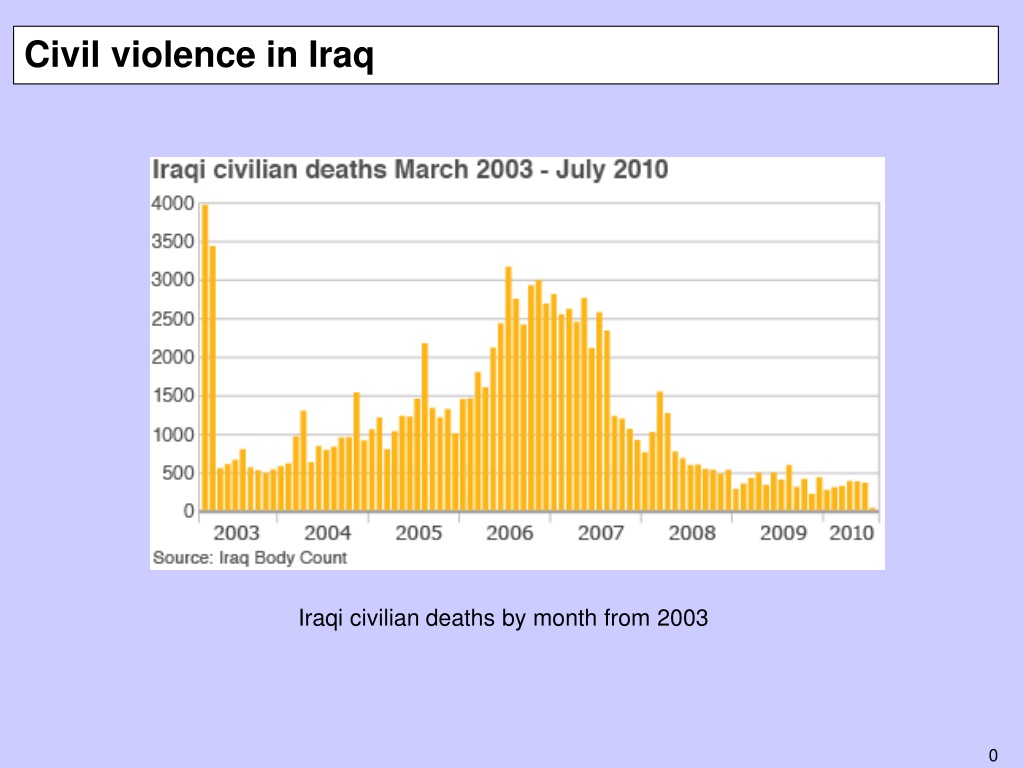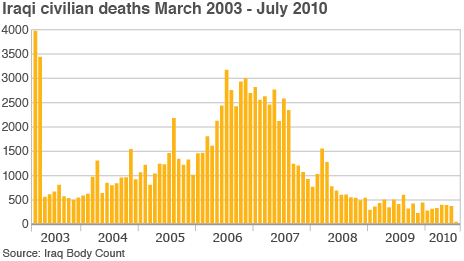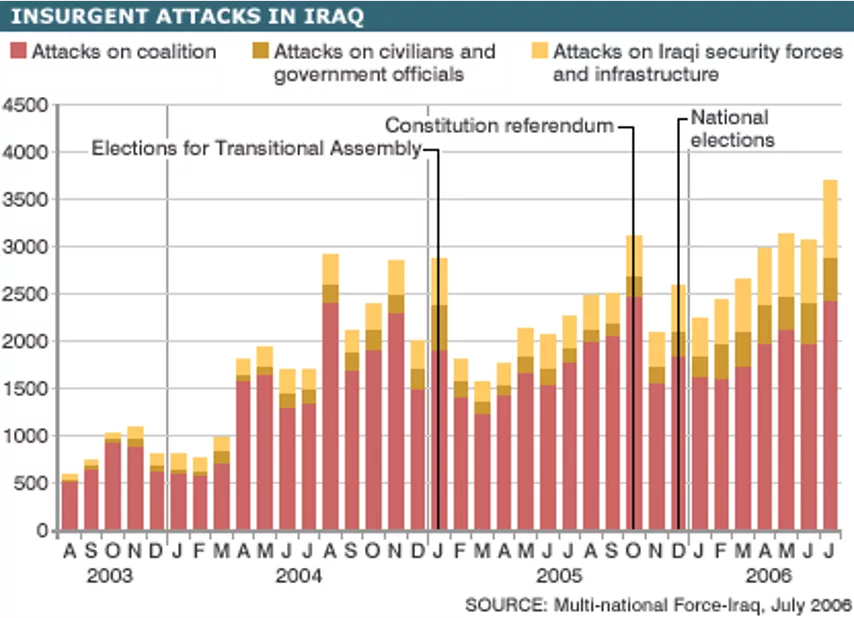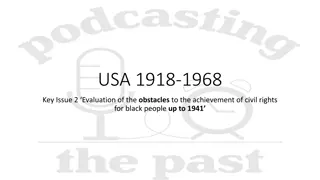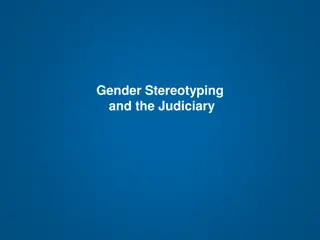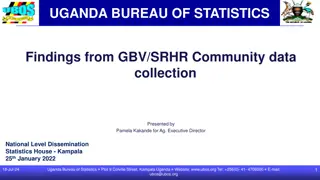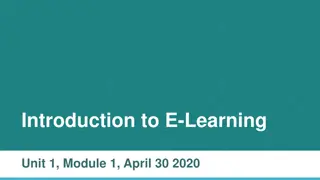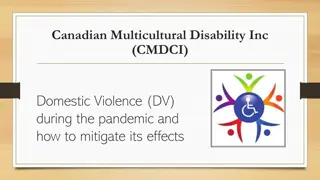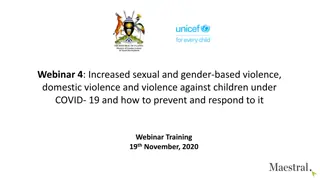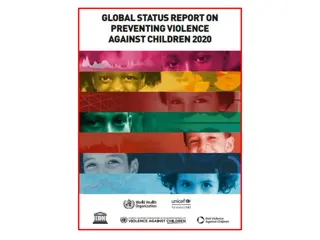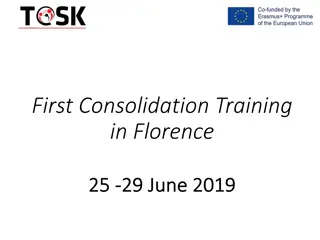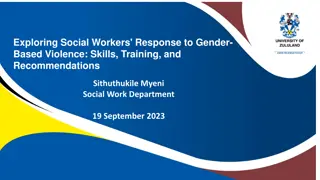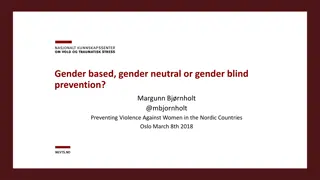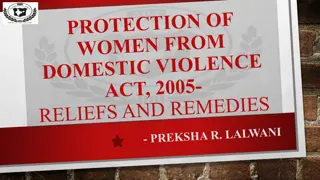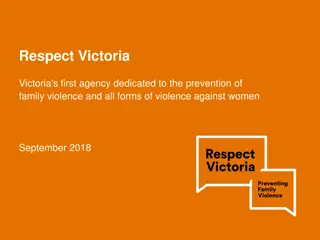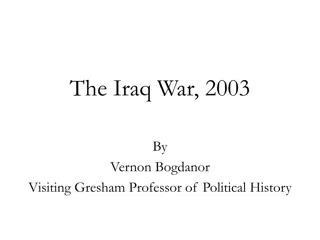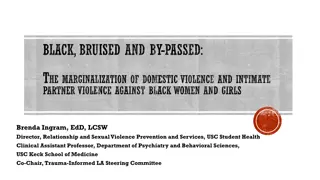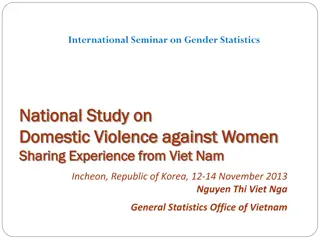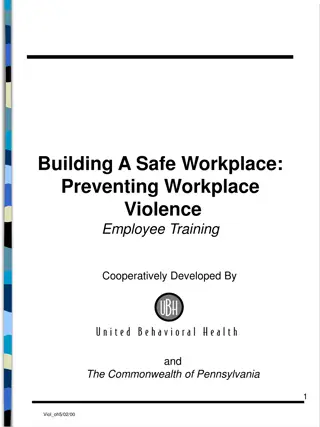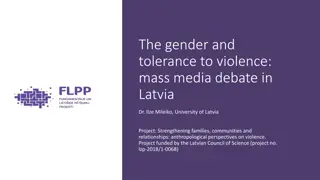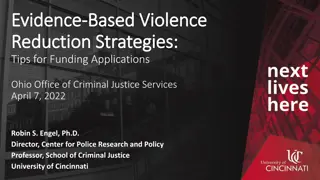Civil violence in Iraq
The complex history of civil violence in Iraq and Lebanon, from Iraqi civilian deaths to the Lebanese Civil War. Discover the political and confessional maps, post-siege scenarios, and Sudan's civil wars in this informative content.
Download Presentation

Please find below an Image/Link to download the presentation.
The content on the website is provided AS IS for your information and personal use only. It may not be sold, licensed, or shared on other websites without obtaining consent from the author.If you encounter any issues during the download, it is possible that the publisher has removed the file from their server.
You are allowed to download the files provided on this website for personal or commercial use, subject to the condition that they are used lawfully. All files are the property of their respective owners.
The content on the website is provided AS IS for your information and personal use only. It may not be sold, licensed, or shared on other websites without obtaining consent from the author.
E N D
Presentation Transcript
Civil violence in Iraq Iraqi civilian deaths by month from 2003 0
Violence in Iraq The percentage of attacks on Iraqis increased in 2005-2006 1
Lebanese Civil War 1975-1990 Context Divided between Maronite Christians, Druze, Sunni, and Shi a National Pact established confessional system (6/5 Christian-Muslim ratio in parliament; Christian President, Sunni PM) Growing numbers of Muslims, especially Shi a in the South Early confrontations PLO had moved to Lebanon and settled around the Palestinian refugee camps; launched guerilla attacks at Israel Phalange was determined to get rid of the PLO and attacked them in 1975 Christians and Muslims began expelling each other from different parts of Lebanon External intervention Syrian intervention Israel invaded in 1982, putting Beirut under siege A multinational force landed to help restore some order The new Lebanese President asked for Syrian help to come and restore order Iran funded new Shi a militias Taif Accord Arab League brought the old Lebanese parliament to design a new system in 1989 Gave more power to the Muslim Prime Minister, changed the 6/5 ratio to a 5/5 ratio Christian rebellion against the Taif Accord 2
Confessional map of Lebanon http://upload.wikimedia.org/wikipedia/commons/thumb/9/90/Lebanon_sectors_map.jpg/220px-Lebanon_sectors_map.jpg 4
Lebanon after the siege of Beirut (1983) Syrian-controlled http://upload.wikimedia.org/wikipedia/commons/thumb/a/ac/Civil_war_Lebanon_map_1983a.gif/220px-Civil_war_Lebanon_map_1983a.gif Christian-controlled Israeli-controlled UN-controlled 5
Civil Wars in the Sudan 1962-72; 1983-2005 Upheaval in the Sudan Sudan became independent at the time of the Suez crisis in 1956 After a series of military coups the country was led by Jafar Numeyri for 16 years Coup deposes Numeyri in 1985, which was followed by elections and a coalition government led by Sadiq al-Mahdi Omar al-Bashir took power in a military coup in 1989 Al-Bashir dissolved parliament and formed an alliance with Hasan al-Turabi, the leader of the National Islamic Front; focused on reintroducing shari a The civil war Race cleavages between the North and the South Began in with a Southern rebellion 1962-1972 (Round 1) Oil is discovered in the South in 1978 not exported until 1999 Round 2 breaks out in 1983, led by the Sudan People s Liberation Movement (SPLM) and John Garang Shari a is imposed in the country in 1983 by President Numeyri Almost 2 million civilians killed in Southern Sudan The road to peace By 2003, competing rebel forces agree to unite in their fight against the government After 2 years of bargaining, a peace deal was signed in Nairobi in January 2005 The deal provides for a high degree of autonomy for the South, and an equal sharing of Southern oil revenues between Khartoum and the Southern provinces 6
Regions of the Sudan http://upload.wikimedia.org/wikipedia/commons/thumb/7/7b/Political_Regions_of_Sudan%2C_July_2006.svg/220px-Political_Regions_of_Sudan%2C_July_2006.svg.png North Sudan Darfur Other contested regions South Sudan 8
Civil society in the Middle East What do Arabs care about? Mainly the same things everyone cares about Role of religion Role of politics Domestic vs. Arab issues including Palestine Attitudes toward other countries What does civil society look like in the Middle East? Born out a sense of crisis Social demands are not met by existing regimes; sense of insecurity Increasing number of NGOs, professional groups/labor unions, political parties (which look more like civil society groups in many cases) Historically strong civil societies in Egypt, Lebanon, Iran, Turkey Should Islamist groups be considered part of civil society? 9
The effects of civil society on regimes What is its potential for creating liberty? Strengthens the role of the individual vs. the state over time Civil society is currently where most of the liberal political discourse is taking place Helps circulate ideas Creates an organizational platform for mobilizing on behalf of political demands Regimes are losing control over the flow of information What is its potential for supporting existing regimes? Government creation of groups that it can effectively monitor (corporatism) Laws governing registration, public gatherings, reports, division into separate ministries A less costly way for regimes to maintain control use civil society instead of violence Media freedom Traditionally very restricted media; starting to open up with public debates in forums like al-Jazeera, but journalists have often been harassed and jailed Overall, an increasing appetite for debate 10
Key human rights issues in the Middle East Surveillance, imprisonment, torture Surveillance by mukhabarat Political imprisonment is common Torture is commonplace in some regimes (ex: tazmamart) Women s rights Wide variation in women s freedoms Institutionalized cultural discrimination on gender roles Political issues: can they vote? run for political office? can they travel? Religious rights Christian minorities Jewish, Baha i minorities Increasing number of openings but they often do not last More human rights organizations around than ever before because of: a) domestic civil society pressures b) effective pressure by international organizations 11
Key lecture termsOctober 17 and 19 Green line Saddam Hussein Maronites Ayatollah Khomeini Hizbullah Shatt al-Arab Siege of Beirut Halabjah Taif Accords UN Special Commission on Disarmament (UNSCOM) Michel Aoun Oil for Food Program Omar al-Bashir Civil Society Hasan al-Turabi Corporatism John Garang Diwaniyya Nairobi peace accords Qat chew Darfur Al-Jazeera Kurdistan Workers Party (PKK) Mukhabarat Berbers Tazmamart 12
